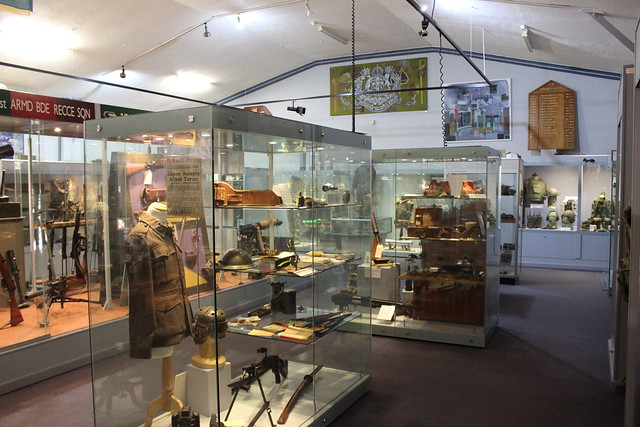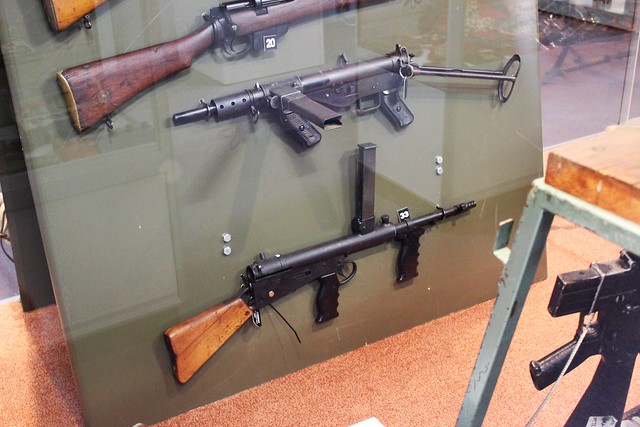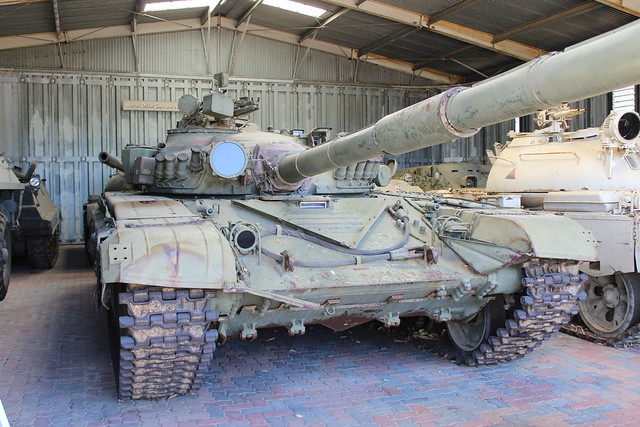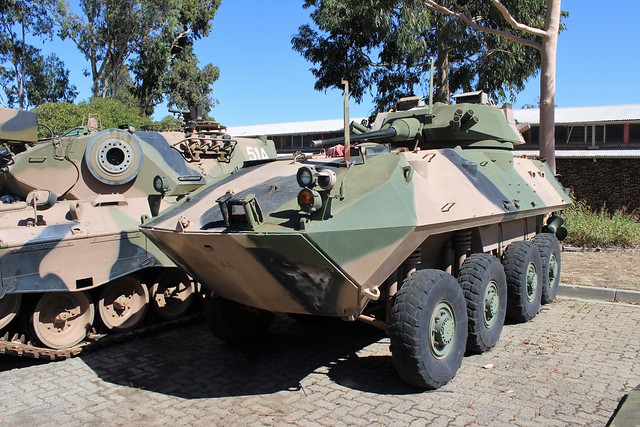Visit to the Army Tank Museum, Puckapunyal
One of the many things on my ever-expanding list of places to see in Victoria was the Royal Australian Armoured Corps (RAAC) Army Tank Museum in Puckapuynal. As the Museum is only open on some weekdays (Tuesday to Friday), it needs some planning in order to visit for someone in full-time employment.
Having now ticket it off my list, I can definitely say that it is absolutely worth going. We’re lucky to have this museum in Victoria, as many other military collections are scattered right across the country.
Getting there
It may be possible in theory to get to the Museum by public transport from Melbourne. It would involve catching a V/Line service to Seymour and then an intertown bus to Puckapunyal. Unfortunately, there is an annoying service gap of about 4 hours to return to Seymour which means that you have to choose between spending 30 minutes or four hours at the Museum.
However, given that the Museum is located within an active military base, complete with checkpoints and vehicle searches, I’m not actually sure if any old person could simply board the bus and get off at a stop within the base. Perhaps the base guards check the bus at the checkpoint when it enters? I’ve sent an inquiry to PTV so I’ll update this once I hear back.
Update: PTV sent back a response to my inquiry via Mitchell Transit, the bus company:
You must have a name/address of who you are visiting and a reason for entering the base. You must also carry photo identification and obtain a visitors pass. If you are visiting the tank museum – paperwork must be completed prior to your visit. Access to the base is up to the base security – not the bus company. If you need further clarification I suggest you contact the base direct as we can accept no responsibility if you are denied access to the base.
Please note if you are denied access then you must remain at the gate until the bus returns.
Unfortunately this information has not been added to the website or timetable. Hopefully it will soon.

In the end, it seemed too much of a hassle to get there using public transport (even for me), so I borrowed a car and drove.
The base is close to the Hume Freeway which makes it easily accessible. You have to drive another 10 minutes or so down a side road and turn into the base access drive.
As mentioned above, this is an active military installation. There are guards at the entrance who conduct a vehicle search and inspection (who are very friendly too). You have to get out of the car, show photo ID and tell them your destination in order to get a visitors lanyard to be allowed inside. Then there are strict instructions to drive directly to and from the Museum. They call ahead and you have only a few minutes in which to arrive, otherwise they call the MPs and you’re in quite a bit of strife. Needless to say, any video or photography anywhere other than inside the Museum is prohibited.
Main museum building
The Museum is made up of two main sections. The first is inside the entrance building, which is fairly small but full of historical items.
It costs $8:50 to enter for adults, with a concession price of $5:00 also available. If my memory serves me correctly, I think that there is also a family ticket costing $20:00. This gives you access to both sections.
The indoor area is organised in semi-chronological order. Beginning with the Australian Light Horse from the Boer War through to the First World War, the displays guide you through the various conflicts, peacekeeping and peacemaking operations that Australian forces have been involved in right up until the present day and the Second Gulf War.

Not all of the items directly related to armour or vehicles. I think that this is a good thing, as it provides historical context and extra information that is usually very interesting. Some of the displays are dated and seem like they need a bit of sprucing up to show off their true significance and information. For example, this example below is the Austen Gun (an Australian modification of the British Sten Gun) next to the Australian-designed Owen Gun – an excellent weapon in many respects. Due to the lack of labels, the significance of these two weapons in amongst a crowd of Lee-Enfield and Kar 98 rifles would probably have been lost.

Overall though, the exhibits were fascinating and well-curated. Given my particular interest in the Second World War I was naturally drawn to those first. However, there were equally interesting items from other conflicts including the Vietnam War, training exercies and the 1993-95 Somalia peacekeeping operations.
Outdoor museum area
Of course the main thing that people come here to visit is to see the over 90 vehicles that the Museum has on display in various sheds and warehouses around its grounds. I have spent my life reading about them and looking at photos but had previously never had the opportunity to see most of them ‘in the flesh’.
Being the RAAC Museum, the focus is primarily on Australia. This means that there are some vehicles here that I suspect would be seen in very few other places in the world – if any at all. This would particularly be the case with the only Australian-designed and built tank in history (the Sentinal), of which only 65 were ever made, as well as the various modified tanks, APCs and other exhibits.

I particularly enjoyed one small area in the corner of the yard which housed several Matilda tanks. Despite their squat appearance and slow speed (they were named after a children’s character called ‘Matilda’ who was a duck), they are one of my favourite tanks of the Second World War. There were several variants of the tank that I did not know about. This included the Australian modification where anti-submarine mortars (‘Hedgehogs’) were fitted onto the rear of the vehicle in order to provide close infantry support.

There were many other vehicles, artillery pieces and other items from the Second World War throughout the first two sheds. Some of the vehicles are parked behind others so you have to do a little hunting around to find them. Some of the smaller one, like the Bren Carriers, have such a low profile that they almost entirely hide behind the tanks parked in front of them.
After the World War Two exhibits you start to see more from the Cold War era. Given that Australia has only operated four different types of tanks post-WW2, an exhibit made up entirely of these vehicles wouldn’t be very big. Instead, the Museum have made a good decision to include an entire warehouse filled with Eastern Bloc tanks and vehicles. This includes one of the famous BMP armoured fighting vehicles, a captured Chinese command vehicle and what I think is a T-72 tank.

The final part of the outdoor area is modern Australian armoured vehicles. There are several APCs and other types scattered around the area. The LAV-25 is probably one of the more iconic pieces of equipment used by the Australian Army in recent decades, having seen service in many theatres.

The ‘Hall of Technology’ followed with an interesting display of one of the 103 Leopard 1 tanks acquired by the Australian Army over the 1970s and 1980s. This particular one has been cut in half, allowing visitors to walk in between the two sections and have a close look at the interior.

Within the hall is an area where restoration and maintenance of the collection takes place and several smaller rooms with exhibits about many of the other parts of the Army that support armoured and motorised units. This includes signals, supply and maintenance formations.
Summary
Although it is a bit of a hike out to the country, a trip to the Tank Museum is definitely worthwhile. If you are even remotely interested in any military history, not necessarily armour, then you will find this a very interesting place.
2 Comments
Join the discussion and tell us your opinion.
[…] March I ticked something off my list that I had wanted to do for a long time – visit the Army Tank Museum in Puckapunyal. This included some unexpected railway history, a nice walk around Seymour and […]
[…] the four still publicly accessible – one at the Royal Australian Armoured Corps (RAAC) museum at Puckapunyal and the other at the Australian War Memorial in Canberra. The other survivors appear to be at the […]